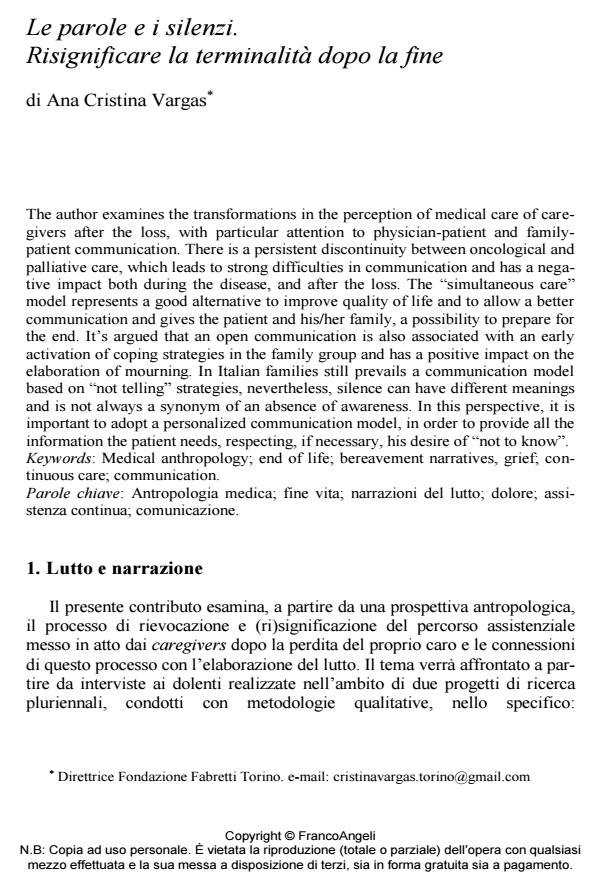Le parole e i silenzi. Risignificare la terminalità dopo la fine
Journal title SALUTE E SOCIETÀ
Author/s Ana Cristina Vargas
Publishing Year 2015 Issue 2015/3
Language Italian Pages 15 P. 102-116 File size 304 KB
DOI 10.3280/SES2015-003009
DOI is like a bar code for intellectual property: to have more infomation
click here
Below, you can see the article first page
If you want to buy this article in PDF format, you can do it, following the instructions to buy download credits

FrancoAngeli is member of Publishers International Linking Association, Inc (PILA), a not-for-profit association which run the CrossRef service enabling links to and from online scholarly content.
The author examines the transformations in the perception of medical care of caregivers after the loss, with particular attention to physician-patient and familypatient communication. There is a persistent discontinuity between oncological and palliative care, which leads to strong difficulties in communication and has a negative impact both during the disease, and after the loss. The "simultaneous care" model represents a good alternative to improve quality of life and to allow a better communication and gives the patient and his/her family, a possibility to prepare for the end. It’s argued that an open communication is also associated with an early activation of coping strategies in the family group and has a positive impact on the elaboration of mourning. In Italian families still prevails a communication model based on "not telling" strategies, nevertheless, silence can have different meanings and is not always a synonym of an absence of awareness. In this perspective, it is important to adopt a personalized communication model, in order to provide all the information the patient needs, respecting, if necessary, his desire of "not to know".
Keywords: Medical anthropology; end of life; bereavement narratives, grief; continuous care; communication.
Ana Cristina Vargas, Le parole e i silenzi. Risignificare la terminalità dopo la fine in "SALUTE E SOCIETÀ" 3/2015, pp 102-116, DOI: 10.3280/SES2015-003009